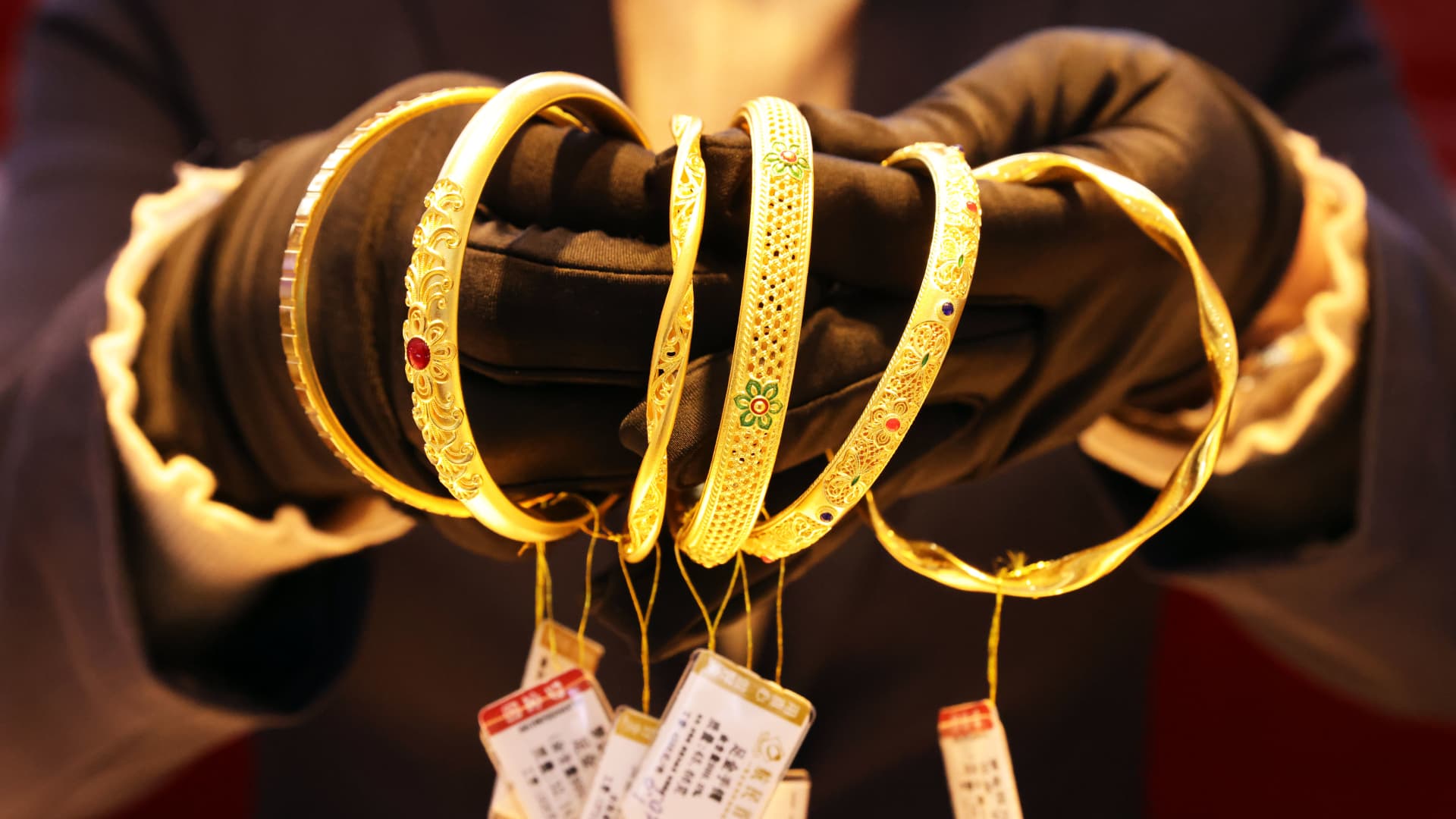Gold bracelets at a gold jewelry store in the Zhejiang Province of China.
Vcg | Visual China Group | Getty Images
Gold’s recent rally has sparked a bullion rush, but along with it came a surge in gold scams in China.
Thousands of people in China have been duped into forking out money on “fake gold” — inferior or artificial gold — after trying to purchase so-called “999 gold” online, according to the government.
The purest form of gold is commonly referred to as 999 gold, because it has gold content of 99.9%. It is also sometimes referred to as 24-carat gold.
“Fake gold is becoming a major problem in China as more Chinese are looking to put their savings into gold,” said China Market Research Group’s Managing Director Shaun Rein.
China is the leading consumer demand for bullion, after the country overtook India in 2023 to become the world’s largest buyer of gold jewelry.
Chinese consumers bought 603 tons of gold jewelry last year, a 10% jump from 2022, data from the World Gold Council showed.
The main thing a consumer can do to protect themselves is to buy from reputable sources, whether this is online or in-store.
Nikos Kavalis
founding partner of Metals Focus
“The demand for gold combined with unsophisticated Chinese consumers and investors unable to differentiate between 24-carat and lower quality gold has given rise to scammers,” Rein added.
Reports about the rise in gold scams have been on local media and consumer protection sites such as Heimao Tousu, a third-party consumer service platform under tech giant Sina.
One user who reportedly bought five gold pendants for 1,985 Chinese yuan (about $280) on online e-commerce platform Taobao said he found out the gold was fake after conducting a flame test. Fake gold gets darker or reveals a greenish color when placed under flame, while pure gold turns brighter on exposure to heat.
Another user complained about buying a gold product from online retailer Pinduoduo, only for it to arrive with rust on it. The user claimed to have brought it to a jeweler for appraisal, and was told it was fake.
Taobao and Pinduoduo did not respond to CNBC’s requests for comment.
Real vs. fake gold
In a bid to protect consumers from scammers, China’s government recently released guidelines on how to identify the authenticity of gold jewelry.
Tips included listening to the sound when it is thrown on the floor, or dropping nitric acid on the goldware. If the acid drop reveals a green color, the gold object is either made of other ordinary metal or gold plated. If nothing happens to the gold, then it is likely the gold is genuine, the guideline noted.
Additionally, a consumer who is familiar with gold could spot a fake from its weight vis a vis its size and volume, said Nikos Kavalis, founding partner of precious metals research consultancy, Metals Focus.
“Depending on the design, it may also be possible to spot fake jewelry from its hardness – 999 gold is very soft,” he added. That said, aside from tell-tale signs and tests, it could still be difficult to tell for sure whether one has been sold a fake.
“The main thing a consumer can do to protect themselves is to buy from reputable sources, whether this is online or in-store,” said Kavalis.
Customers purchasing gold products at a gold shop in Nantong, China.
ChinaFotoPress | Getty Images
Fake goods are not a new phenomenon in China. The economic powerhouse leads the world in counterfeit and pirated products, driven by both buyers who are unaware that they are purchasing counterfeits, and those who actively seek them out.
Fakes are abound on Chinese e-commerce platforms, “from gold to pirated Chanel handbags,” said China Market Research Group’s Rein.
That said, online gold sales, though under fast development, still takes up a small part of gold consumption in China, with most still preferring to purchase them offline, said the World Gold Council.
“WGC reminds consumers not to trade the security of their purchase for suspiciously low prices,” the international trade association told CNBC.
Gold prices retreated last week after rallying to record highs in recent months. The spot price for gold is currently trading at $2,302.76 per ounce.







